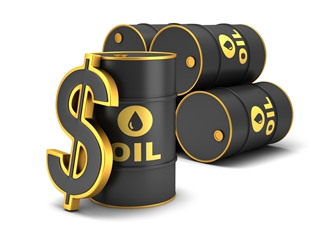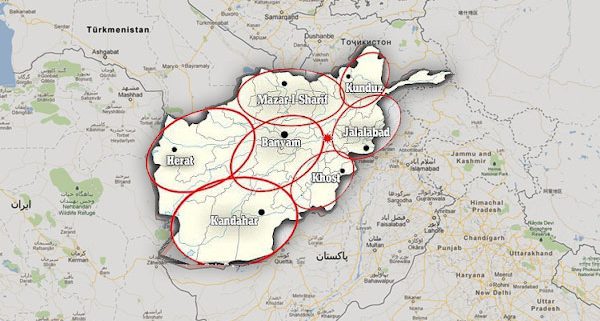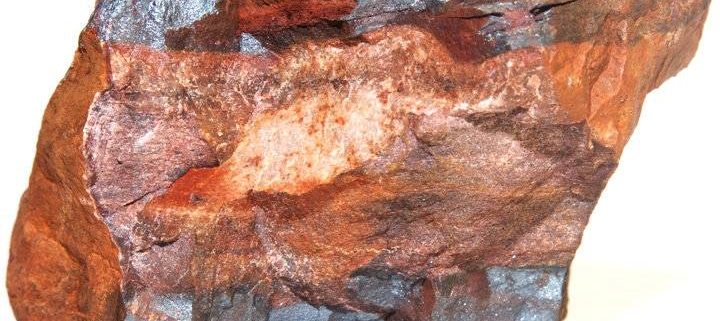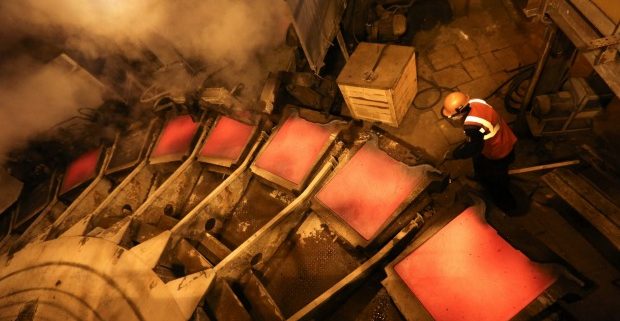Citigroup Inc. joined Goldman Sachs Inc. believing in better second quarter of 2017

“It’s time to have faith in raw materials, and oil will probably recover to the mid-$60s by the end of the year.” Citigroup Inc. who joined Goldman Sachs Group Inc. said.
Even if U.S. shale output may come “booming back” midst of higher crude prices, production control by OPEC and its leaguers should help neutralize that increase over the next six to nine months.

The producers need to widen their deal to cut supplies by the end of the year.
Goldman Sachs has also made similar comments, saying extensive inventories that have undermined the output cuts are set to shrink and calling for more patience from the market.
Bank sees commodity investment flows rising in second quarter
“With a continuation of the OPEC and non-OPEC producer deal in the second half of 2017 and the expected combined inventory draw-down, we expect oil prices to move above $60 a barrel by the second half of the year.” (Market analysts wrote.)
 Still, bigger supplies from producers in the fourth quarter of 2016 at this moment seem “a dark cloud hanging over the market.” And also a failure to extend the output agreement which would send prices “precipitously lower.”
Still, bigger supplies from producers in the fourth quarter of 2016 at this moment seem “a dark cloud hanging over the market.” And also a failure to extend the output agreement which would send prices “precipitously lower.”
The bank expects U.S. West Texas Intermediate oil to average $62 a barrel. Global benchmark Brent crude is expected to average $65 a barrel in the fourth quarter. WTI was trading 30 cents lower at $52.35 a barrel on the New York Mercantile Exchange at 10:34 a.m. London time on Tuesday.  Brent on the ICE Futures Europe exchange was down 35 cents at $55.01 a barrel. (Bloomberg)
Brent on the ICE Futures Europe exchange was down 35 cents at $55.01 a barrel. (Bloomberg)
The production-cut agreement urged a change in market structure. That change meant traders had less incentive to store oil at sea prompting the flow of supplies floating on ships to onshore sites. That set the stage for boosting U.S. inventories to a record in the first quarter of 2017.
This gain and agitated output by the OPEC in the fourth quarter had an effect that would “ultimately hinder and reverse the very rebalancing they were trying to accelerate,” the analysts said. The bank expects U.S. liquids output to grow y-o-y at 1 million barrels per day or more by December.
U.S. Crude Oil Inventory, Source: Bloomberg 
Factors that lead to Declines across commodities
The drop in oil prices during March led declines across commodities, according to Citigroup. It estimates commodity assets under management grew about $45 billion in the first two months of the year but gave up $35 billion during the selloff in raw materials in March. Investment inflows should increase in the second quarter.” (The Citi bank predicted.)
“Do commodities need a bit of a prayer to bounce again in ‘17? Not necessary. Commodities stumbled through the first quarter following what was clearly the healthiest year for the sector since the decade began. There was too much froth in critical sub sectors like oil, copper and iron ore. In conclusion, signs of better performance are increasingly clear, despite major risks.”



 Base metals prices started a holiday-shortened week mostly on the defensive. With LME premarket trading on Tuesday April 18 seeing lower levels. – Potentially supportive macroeconomic developments were shrugged off.
Base metals prices started a holiday-shortened week mostly on the defensive. With LME premarket trading on Tuesday April 18 seeing lower levels. – Potentially supportive macroeconomic developments were shrugged off. e seasonally strong second quarter. The lack of upside momentum in most of the metals since mid-February has increased the chance of stale long liquidation,” William Adams of Metal Bulletin said.
e seasonally strong second quarter. The lack of upside momentum in most of the metals since mid-February has increased the chance of stale long liquidation,” William Adams of Metal Bulletin said. y trading at $1,928 per tonne, up $18 from the Thursday close. The local government in Xinjiang, western China, halted three new aluminium projects with combined capacity of 2 million tons per year for violating rules aimed at curbing output.
y trading at $1,928 per tonne, up $18 from the Thursday close. The local government in Xinjiang, western China, halted three new aluminium projects with combined capacity of 2 million tons per year for violating rules aimed at curbing output. a $29 decline, and looks vulnerable to a test of last week’s $5,615 low. While three-month zinc price was at $2,593 per tonne, a $31 loss, with a test of $2,558 – last week’s low-point – possible. Also, three-month lead price skidded as low as $2,200 per tonne, a $39 loss, while nickel fell to $9,560, down $190. Most noteworthy, three-month tin price stood at $19,795 per tonne, however, a $190 advance.
a $29 decline, and looks vulnerable to a test of last week’s $5,615 low. While three-month zinc price was at $2,593 per tonne, a $31 loss, with a test of $2,558 – last week’s low-point – possible. Also, three-month lead price skidded as low as $2,200 per tonne, a $39 loss, while nickel fell to $9,560, down $190. Most noteworthy, three-month tin price stood at $19,795 per tonne, however, a $190 advance.
 Brazil’s ore export volumes fell 4.7% year-on-year in March. Exports totalled 95,829 tonnes. Down from 100,528 tonnes in March 2016. The main destination for the Brazilian copper ore was India. With an intake of 31,583 tonnes last month. About 70% of the shipments came from the northern state of Pará, where Vale has its copper operations.
Brazil’s ore export volumes fell 4.7% year-on-year in March. Exports totalled 95,829 tonnes. Down from 100,528 tonnes in March 2016. The main destination for the Brazilian copper ore was India. With an intake of 31,583 tonnes last month. About 70% of the shipments came from the northern state of Pará, where Vale has its copper operations. razilian cathode exports posted a significant year-on-year drop in March. As Paranapanema, the country’s only producer, shifted its focus back to the domestic market. Cathode exports reached 1,766 tonnes last month, down from 16,138 tonnes in March 2016.
razilian cathode exports posted a significant year-on-year drop in March. As Paranapanema, the country’s only producer, shifted its focus back to the domestic market. Cathode exports reached 1,766 tonnes last month, down from 16,138 tonnes in March 2016. Brazil exported 2,022 tonnes of copper wire in March, down from 3,515 tonnes a year earlier, according to MDIC.
Brazil exported 2,022 tonnes of copper wire in March, down from 3,515 tonnes a year earlier, according to MDIC. Throughout the month, c. futures saw monthly average daily volumes (ADV) hit 79,265. Bringing the year-to-date ADV to 94,653 – up 10.8% compared with the same period a year ago.
Throughout the month, c. futures saw monthly average daily volumes (ADV) hit 79,265. Bringing the year-to-date ADV to 94,653 – up 10.8% compared with the same period a year ago.





 Growth of 6.9 percent was the fastest in six quarters! Forecasts beating March investment, retail sales and exports all suggesting the economy may carry solid momentum into spring.
Growth of 6.9 percent was the fastest in six quarters! Forecasts beating March investment, retail sales and exports all suggesting the economy may carry solid momentum into spring. In order to sustain growth in the long term. The question we need to ask is whether this investment-led model is sustainable? As the authorities have trouble taming credit. We need to watch closely whether China’s top leadership will send a stronger signal to tighten monetary policy shortly.” (ANZ info)
In order to sustain growth in the long term. The question we need to ask is whether this investment-led model is sustainable? As the authorities have trouble taming credit. We need to watch closely whether China’s top leadership will send a stronger signal to tighten monetary policy shortly.” (ANZ info)



 added 11 oil rigs in the week to April 13, bringing the total count up to 683.” (Baker Hughes, Energy services firm said.) That is the highest in about two years. <RIG/U>
added 11 oil rigs in the week to April 13, bringing the total count up to 683.” (Baker Hughes, Energy services firm said.) That is the highest in about two years. <RIG/U> United States is constantly irritating OPEC with its increasing outputs. In the meantime, they are also irritating other major oil producers who made a deal to cut outputs. Curbing output sustains a rally in prices in a market that has been oversupplied since 2014.
United States is constantly irritating OPEC with its increasing outputs. In the meantime, they are also irritating other major oil producers who made a deal to cut outputs. Curbing output sustains a rally in prices in a market that has been oversupplied since 2014.
 In Japan, the benchmark Nikkei 225 closed down 91.21 points, or 0.49 percent, at 18,335.63, while the Topix slid 9.24 points, or 0.63 percent, to 1,459.07. Across the Korean Strait, the Kospi closed down 13.73 points, or 0.64 percent, at 2,134.88. Chinese mainland markets were also down — the Shanghai composite finished down 31.47 points, or 0.96 percent, at 3,244.48 and the Shenzhen composite fell 28.01 points, or 1.39 percent, to 1,986.64. Taiwan’s Taiex fell 103.75 points, or 1.05 percent, to 9,732.93. (CNBC info)
In Japan, the benchmark Nikkei 225 closed down 91.21 points, or 0.49 percent, at 18,335.63, while the Topix slid 9.24 points, or 0.63 percent, to 1,459.07. Across the Korean Strait, the Kospi closed down 13.73 points, or 0.64 percent, at 2,134.88. Chinese mainland markets were also down — the Shanghai composite finished down 31.47 points, or 0.96 percent, at 3,244.48 and the Shenzhen composite fell 28.01 points, or 1.39 percent, to 1,986.64. Taiwan’s Taiex fell 103.75 points, or 1.05 percent, to 9,732.93. (CNBC info)
 , the yen strengthened to 108.92 against the greenback Friday afternoon local time, after weakening to an earlier high of 109.22. The Japanese currency remained stronger than levels above 110.7 reached against the dollar earlier in the week.
, the yen strengthened to 108.92 against the greenback Friday afternoon local time, after weakening to an earlier high of 109.22. The Japanese currency remained stronger than levels above 110.7 reached against the dollar earlier in the week.


 ey were claiming the damage was worth 10 billion dollars !
ey were claiming the damage was worth 10 billion dollars !
 in the world.
in the world. Why would a billionaire want to loose his precious time on sabotaging someone else’s businesses? It is only possible if he has some “profits” to gain out of that.
Why would a billionaire want to loose his precious time on sabotaging someone else’s businesses? It is only possible if he has some “profits” to gain out of that.


 erde and the temporary export agreement for Freeport’s Indonesian subsidiary. The next World Copper Conference will be in Santiago, Chile. It will happen 9-11 April 2018.
erde and the temporary export agreement for Freeport’s Indonesian subsidiary. The next World Copper Conference will be in Santiago, Chile. It will happen 9-11 April 2018.
 nternational Trade Comision is doing a research on this subject. It is scheduled to make a preliminary decision on May the 8th. The decision will be about whether such imports from Argentina and Indosnesia hurt U.S. economy and its diesel producers.
nternational Trade Comision is doing a research on this subject. It is scheduled to make a preliminary decision on May the 8th. The decision will be about whether such imports from Argentina and Indosnesia hurt U.S. economy and its diesel producers.
